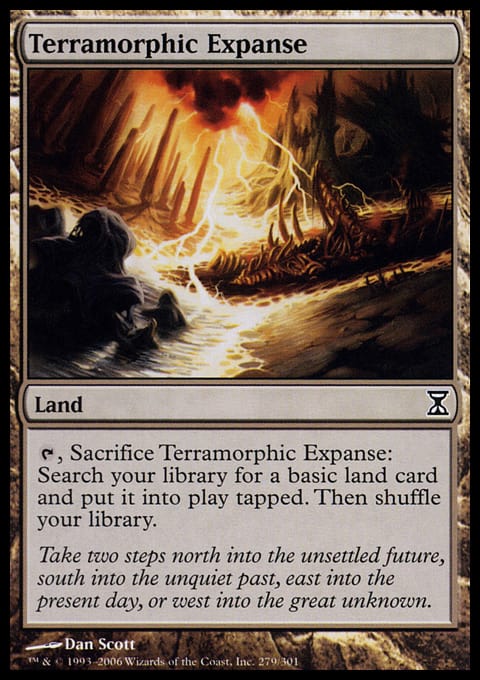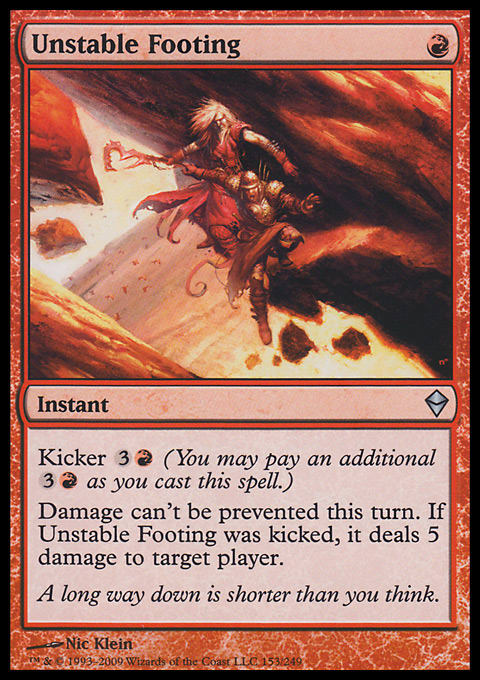This week, I am going to move forward with the discussion on the micro-economic market within the realm of Magic. In case you missed last week’s article where I covered the basics, it can be found here; I strongly suggest reading this article before continuing forward, as I will be building on those ideas this week. Since I discussed the concept of finding your niche market and immersing yourself in the knowledge pool, I want to take that a step further this week and talk about how widen your scope.
Taking what information you have about your given market and applying that theory to other already-existing markets is an important step in driving yourself forward as a financially-minded individual, whether it be for personal gain or a business venture. I will also touch on how you can apply your knowledge base when looking at a new or up-and-coming market as it emerges, but that type of investment is not something I suggest unless you are very comfortable with your skills and trust that you will not wreck your collection given a few poor choices.
Continuing the Journey
Since I used the example of a Standard player with a small collection last week to give an idea of how to learn and endure your current market, I will continue on with that façade this week. Let’s fast-forward a few months to the point at which our collection has grown to contain a sizeable amount of the current Standard format and also contains a number of older cards that perhaps were gained through collections or in very good trades.
For some people, this may be the end goal of trading, and for you, I encourage you to look back at my other articles in which I discuss maintaining a collection through rotation and other follies within the metagame. For those who want more or are looking to grow their already expansive collections even further, please continue reading.
Expansive Expansion
Now that you have finally made the decision to move forward and pursue additional markets within your trading venue, where is the best place to start? For the Standard player, it seems only logical to move into the closest market available: Modern. Advancing into Modern helps a new trader who is looking to grow twofold. First, it allows the trader to have an avenue to unload his rotated cards once that point hits, and it gives him another outlet for cross-format cards such as Deathrite Shaman.
If you are primarily a Commander player, it may be wiser for you to pursue another niche within your already-existing market, such as foil or foreign cards. Since you already have an outlet and knowledge base in this particular market, you have the added advantage of already knowing what people are seeking. I would not dive too deep into such a niche market right off the bat, but begin with some research and well-timed purchases and slowly move forward.
The key to moving forward in these extremely narrow markets is to make yourself known as a voice or personality within that market. You usually will not have enough of a local crowd to support that market solely, but if you promote yourself as a unique market and people begin to know you as “the foil guy,” you will probably be able to hold your own. The major advice I can give anyone looking to move forward in this way is to do all the research you can and to ask those people who are already trusted names within that market. In order to truly be considered a contender, you have to find the fine line between owning enough stock within that genre to be respected as a personality while at the same time not turning your entire collection into such cards since you will find that many times, they can be slow-moving and volatile based on format.
Splitting Your Stock
By this point, I hope you have figured out where you are looking to move toward and have begun to do some research within that new market. The next step when you are looking to expand is to decide how you would like to split your stock. If you are the Standard player who is looking to move into Modern, you will probably base your decision on your local crowd as well as some other external factors. Some of these factors may include whether the Modern Pro Tour Qualifier season is running currently or if your local crowd is even into traveling to said PTQs. Forming an idea of how much stock you can move on a consistent basis will give you a good idea of how deep you want to go at first.
I am a very safe individual when it comes to my money, and I usually like to test the water before I dive headfirst into a new, unexplored territory, so my advice may not suit your personal taste, but I would say to start slow and make sure you can move almost everything you are picking up. I would much rather have people asking me for things I do not have at first—and creating want lists—than be stuck with a large amount of stock at the end of the season that no one in my local area is looking for.
That being said, I am also a patient person with my money, and I have found that if you are willing to wait for a deal, it will usually net you more money and be easier on your collection at first than forcing yourself into a market. Given the example of Modern, I don’t believe I would be looking to invest in the format as a whole in the coming months due to how swingy I expect the market to be with Modern Masters coming. If you can find some solid collections now or are able to locate someone willing to dump his or her Modern stuff at reasonable trade numbers, don’t hesitate to pick up what you can, but overall, I would weather the storm for the season and look to get in near the end of the summer while prices are at rock bottom.
New Frontier
Every once in a while, a new opportunity presents itself within any market. Getting in at the bottom floor will always net you the highest returns if that idea comes to full fruition, but even if you are not there from day one, that does not mean you cannot make money in an emerging market. Most people do not realize a new market is even forming until suddenly, they are immersed in a tide of skyrocketing prices, scrambling to find their share while they still can.
Modern was a great example of a market that appeared to come from nowhere overnight to most but was just another smart investment to those reading ahead. Gavin Verhey wrote a great article on StarCityGames in regards to the failing format that was Extended. If you were among the people who were keeping up with his consistent and constant efforts to revamp the format and create a format that was both pocketbook-friendly and enjoyable to play, Modern came as only a natural progression of his efforts—which were probably determining factors for his employment with Wizards of the Coast.
Those people who kept up with his tournaments and metagame analysis were probably able to get in on some cards that spiked in price before the general public even gave a second thought to the format. Although Overextended and Modern are two very different formats, many of the same staples still carry over and thus still spiked upon the announcement of Modern as a sanctioned format. Even if you were not one of the people following Overextended, and you instead began to cover Modern after it was debuted at the Community Cup in 2011, you still had a great opportunity to pick up cards at a very reasonable price.
 Modern is just one of many major announcements that have shifted the cost of this game in a major way, and I do not expect it to be the last. The best way to keep yourself informed and to stay ahead of the market is to keep yourself in the know through a multitude of social media outlets. New decks and meta tech are discussed daily on sites such as Facebook and Twitter—if you are not ahead of the curve, you will find yourself quickly left behind attempting to pick the bones of what was a juicy opportunity but hours before.
Modern is just one of many major announcements that have shifted the cost of this game in a major way, and I do not expect it to be the last. The best way to keep yourself informed and to stay ahead of the market is to keep yourself in the know through a multitude of social media outlets. New decks and meta tech are discussed daily on sites such as Facebook and Twitter—if you are not ahead of the curve, you will find yourself quickly left behind attempting to pick the bones of what was a juicy opportunity but hours before.
I am looking forward to continuing this series for a number of weeks to come on and off, but since I am sure you are all as excited for spoiler season as I am, I will be taking a break next week to cover that in depth. Don’t forget to put your Modern Masters submissions in before the first; also, please remember that Tarmogoyf is confirmed for a reprint, so you need fourteen additional cards, not fifteen.
Thanks again for reading, and let me know if you guys have any market advice of your own. I am but one voice, and I encourage anyone who believes he or she has a valuable piece of information to share it with the community. As always, I encourage all questions and comments through the comment section below or on Twitter.
Ryan Bushard
























